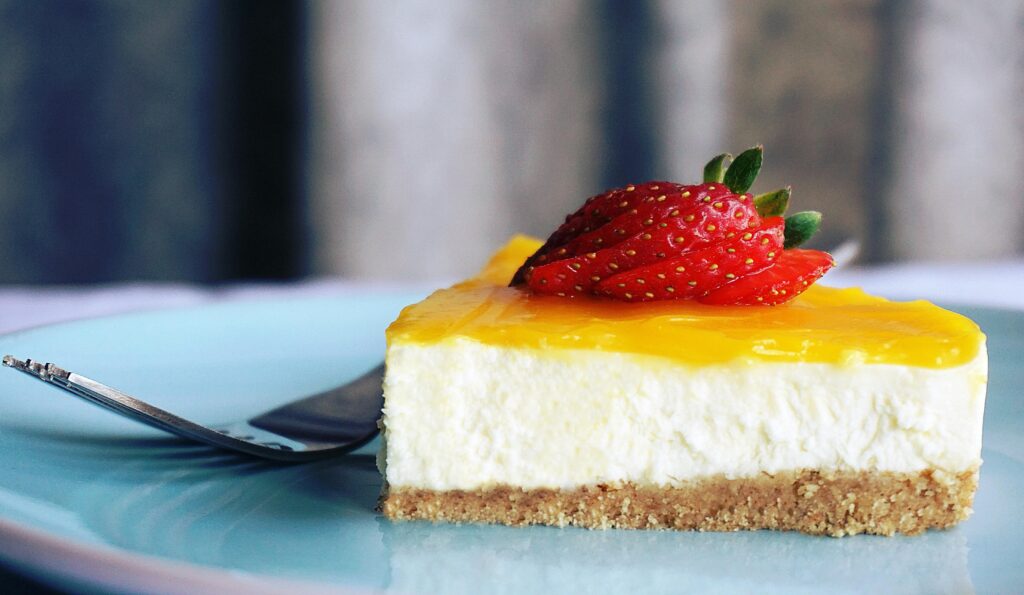I’ll be honest: I made this one out of pure frustration. I’d tried three other lemon cakes that week, and every single one either turned out too dry or too sweet. Then, I remembered Mary Berry’s Lemon Yoghurt Cake from her Baking Bible. Greek yoghurt? Separate the eggs? It seemed worth a go.
The first time I made it, I overwhipped the egg whites (you’ll see the results in the mistakes section—spoiler: rubbery edges). But once I figured out the folding technique, this cake turned out to be one of the fluffiest lemon cakes I’ve ever made. The crumb is so soft, and the yoghurt gives it a tender bounce. As for the icing? It’s tangy, bright, and doesn’t cloy at all. If you’re into cakes with a fine crumb texture, you should try Mary Berry’s Pound Cake Recipe too—it’s another buttery classic that never disappoints.
Let me share what makes this cake actually work (and what not to mess with—I learned the hard way).
Why This Cake Works So Well
Many lemon cakes end up either drying out or tasting like cleaning spray. This one avoids both pitfalls. Here’s why:
-
Greek Yoghurt isn’t just about moisture—it gives the batter body, making the cake stay light and soft without needing a lot of fat.
-
Separating the eggs sounds like extra effort, but it really makes a difference. Whipping the whites separately helps keep the cake light and airy.
-
The Icing uses only lemon juice and sugar, which balances the tanginess perfectly. Because the sponge isn’t overly sweet, the icing cuts through and adds the right amount of zing.
-
One bowl, one whisk—no stand mixer needed. I made this on a Sunday morning while still in my dressing gown (just like Mary Berry’s Battenberg Cake). It’s simplicity at its best.
Ingredients + Why They Matter
-
Granulated Sugar (300g) – This gives structure and sweetness. I tried reducing it once, and the cake lost its bounce.
-
Salted Butter (55g) – Salted butter adds depth of flavour. If you want to use unsalted, just add a pinch of salt—but I prefer it this way.
-
Extra-Large Eggs, Separated (3) – The yolks bring richness, and the whites help lift the cake. Don’t skip this step.
-
Greek Yoghurt (225g) – The moisture booster. Full-fat works best. I tried 0% fat once, and the texture turned out weirdly squeaky.
-
Lemon Zest (1 lemon) – The depth of lemon flavour comes from the zest. If you want a stronger lemon punch, use two lemons.
-
All-Purpose Flour (175g) – This keeps things light. I’ve never needed self-raising flour—baking powder is enough.
-
Baking Powder (2 tsp) – Essential for lift and a fluffy texture.
-
Salt (½ tsp) – Balances the sweetness and sharpness.
-
Confectioners’ Sugar (115g) + Lemon Juice (1½ tbsp) – For the icing. Make sure to use fresh lemon juice—bottled stuff just doesn’t cut it.
Making It Yours (Without Ruining It)
-
No Dairy? I tested this with coconut yoghurt (full-fat), and while the texture held up, the flavour became a bit too tropical. It reminded me of Mary Berry’s Coconut Cake, which leans into that sweetness. It works, but it’s a different vibe.
-
No Greek Yoghurt? Regular plain yoghurt works too, but the batter will be looser, so reduce the lemon juice slightly to compensate.
-
Lemon-Lime Twist – Swap half the zest and juice for lime for a mojito-like zing. It’s surprisingly lovely! If you love citrus cakes with a twist, Mary Berry’s Double Orange Cake is another vibrant option.
-
Don’t Add Berries to the batter. They’ll sink to the bottom and make the cake gummy.
Mistakes I’ve Made (And How to Avoid Them)
| What Went Wrong | Why It Happens | How to Fix It |
|---|---|---|
| Cake was rubbery at the edges | Overbeaten egg whites | Stop at soft peaks. Don’t go to stiff peaks. |
| Centre sank after baking | Too much yoghurt or underbaked | Measure carefully and bake until fully set. |
| Icing melted off | Poured it on while the cake was warm | Let the cake cool completely before icing. |
How to Make Mary Berry’s Lemon Yoghurt Cake
1. Prep Your Tin
Grease and line an 8-inch round tin, and preheat the oven to 180°C (fan 160°C).
2. Cream the Butter and Sugar
In a large bowl, beat the sugar, butter, and egg yolks until pale and fluffy.
3. Add the Yoghurt and Zest
Mix in the Greek yoghurt and lemon zest until smooth.
4. Fold in the Dry Ingredients
Sift in the flour, baking powder, and salt. Stir gently—don’t overmix.
5. Whip the Egg Whites
In a clean bowl, whisk the egg whites until soft peaks form.
6. Fold in the Whipped Whites
Carefully fold the egg whites into the batter. Be gentle—don’t knock out all the air! The batter should feel light and mousse-like.
7. Bake
Pour the batter into the prepared tin. Bake for 1 to 1¼ hours, or until golden and a skewer comes out clean. Let it cool in the tin for 10 minutes before transferring to a wire rack.
8. Ice the Cake
Mix the confectioners’ sugar and lemon juice to make the icing. Drizzle it over the cooled cake and let it set for at least 30 minutes before slicing.
Storage + Serving Tips
-
Keeps: This cake will stay fresh for 3–4 days if stored in an airtight container.
-
Freezes: You can freeze the cake (before icing) by wrapping it tightly in cling film. Defrost before icing.
-
Serve With: A lovely cup of tea. The light, zesty flavour is perfect with your afternoon brew.
Frequently Asked Questions
Q: Can I use a different type of yoghurt?
A: Yes, but Greek yoghurt really gives the best texture. If you’re using plain yoghurt, reduce the lemon juice slightly to balance the batter’s consistency.
Q: Can I add berries?
A: It’s best not to add berries to the batter. They tend to sink and make the cake gummy.








